
“On the Run” Chinese Theatrical Poster
Director: Alfred Cheung
Producer: Sammo Hung
Cast: Yuen Biao, Pat Ha Man Jing, Charlie Chin, Chan Cheuk Yan, Idy Chan, Lee Heung Kam, Lo Lieh, Yuen Wah, Philip Ko Fei, Alex To, Peter Pau Tak-Hai, Yau Kam-Hung
Running Time: 88 min.
By Reefer
On The Run is as dark and violent as any film I have seen. Imagine an alternate version of Righting Wrongs minus all the kung fu action and including an even more depressing finale and this is what you might have.
It is hard to imagine casting one of the most athletically gifted actors in film history, Yuen Biao, to play such a serious character without taking advantage of his obvious talent. But this film bravely does it, relying mostly one Yuen’s acting ability as special agent Heung Ming to carry the film. No small feat indeed. Ultimately, Yuen succeeds even though Ming is not a tradition hero. Sporting a bandage diagonally on his cheek and stubble sprouting on his chin, he no longer resembles Jackie and Sammo’s little brother. This is a serious actor and arguably the best performance of his career.
Pat Ha as the hit woman Yiu who murders Heung Ming’s wife and ultimately teams up with him against her employer. Ha plays the assassin cold and almost lifeless. Some have compared her performance to that of Chow Yun Fat in The Killer, a comparison that is as unfortunate as it is misleading. Chow Yun Fat’s Jeffrey was anything but cold and his violence was almost self-expression or strangely . . . character development. Ha’s character is just a girl with a gun. She shoots things. Her reasons for helping the endangered Hueng and his daughter Lin (revenge and she likes the kid) seem hollow as well, like a quick plot fix.
A good deal of an audience’s enjoyment of On The Run will be determined on how quickly they buy that Yuen’s character could forgive Yiu for killing his wife and the young girl’s mother. It was certainly a stumbling block for me. A little more development on her character would have worked wonders. We know that she is hard on the outside, but what is inside?
Having said that, one of joys of this film is that it doesn’t tell you everything. Hollywood counts on its audience being dumb and lazy. This film brazenly thins out the herd by immediately almost declaring that YOU WILL HAVE TO THINK HERE. For example, the first and only meeting in the film between Hueng and his wife (Chan Yuk-Lin) is so short and almost painfully low on information that I wondered if it was insignificant. It turns out to be the most important scene in the film because it provides the only background for the characters. It also underscores the profound sadness that haunts all the characters. Moreover, the audience is left to decide who is at fault for there break-up. Who is the good guy? Bad guy?
Well, we know soon enough who the bad guy is. Seems that Hueng’s wife left him for another cop, superintendent Lui Jun, and he and his gang of corrupt police need to eliminate Yiu for their own safety. He and his underlings seem to travel in packs so that conveniently enough their numbers can be paired down in interesting and incredibly violent ways during the numerous chase scenes. One of the bad guys is none other than Yuen Wah.
Leaving a trail of bodies and extreme brutality, On The Run keeps sinking lower and lower often resembling a trip into Hell. Lots of horrible things happen and not many good things to balance them against. From the cold-blooded murder of sympathetic characters to the climactic endfight in which two guys try to pulverize each other with anything handy, On The Run is an uncomfortable viewing experience that is impossible to enjoy if you check your brain at the door.
Reefer’s Rating: 7/10
By Numskull
I’ve often said that Yuen Biao is a highly under-rated performer. Well, now I’ve seen On The Run, and I’m even more assured of that fact than ever. The man doomed to be forever considered “little brother” to Jackie Chan and Sammo Hung simultaneously draws out your sympathy and demands your respect as Hsiang Ming, a CID agent; the kind of character one frequently associates with the likes of Chow Yun-Fat. Though Biao is known principally for his acrobatic and martial arts skills, this film is radically different from his typical work and proves that he possesses great dramatic, as well as physical, prowess.
Hsiang Ming’s soon-to-be-ex wife (she’s heading for Canada, and he asks her to postpone the divorce so that she can sponsor him to go there too), Lo Huan, is an anti-narcotics cop who is suddenly murdered by a Thai hit woman named Chui. Unsurprisingly, Ming soon becomes hell-bent on revenge, but when Chui and her uncle are betrayed by their employers, he is forced to join forces with his wife’s killer to elude a seemingly endless supply of corrupt cops who want him dead. This nifty twist is the root of the movie’s only significant flaw; Yuen Biao’s character accepts the situation a little too readily, and while it wouldn’t be entirely accurate to say that he “forgives” the assassin, one would expect considerably more hostility between the two of them even after it becomes clear that they must rely on each other to survive. It is also worth noting that Hsiang Ming, while a decent enough guy, isn’t exactly a beacon of purity and righteousness; when he does confront Chui, the “I’ll kill you, you fucking bitch” business comes only after he tells her: “Now I can’t emigrate.” Nevertheless, it’s impossible not to root for Yuen Biao. All he wants is what any of us would want: to protect his daughter, to save his own skin, and to get some payback for his dead wife, in that order. His situation is incredibly bleak; as the movie progresses, practically everyone that he trusts either gets killed or betrays him. There’s more suspense packed into On The Run‘s 88 minutes than there is in just about any lame-ass slasher flick you can name.
When just about everyone else is dead, Yuen Biao squares off against the one person whose hand has guided all of the misery and loss of life that has plagued him from the beginning. What results is possibly the single greatest fight scene, in terms of cinematic storytelling purposes, that I’ve ever seen. Since this movie does not fit into the action category, one might think that a fight to the finish would be considered a somewhat unimaginative climax, but trust me, when it happens, that’ll be the least of your concerns. Turn the volume up and shout your encouragement, neighbors be damned, as Yuen Biao, seething with rage the likes of which is never seen in generic martial arts films old or new, beats the unholy fuck out of his opponent with whatever he can get his hands on, and vice versa. This doesn’t go on for very long…three minutes, tops…but a really long, drawn out fight scene would be both inappropriate to the film and unrealistic as hell; there’s only so much stabbing, gouging, and bludgeoning that the human body can stand.
On The Run is a very in-your-face movie, glorious in its total lack of pretense. That’s not to say it doesn’t have style; the “lurking” scene with Chui and one of the baddies on opposite sides of a wall is incredibly cool. Perhaps it could stand to be a bit more ambitious, but the point is, it perfectly accomplishes what it sets out to do. The film is dark, and I mean that in the literal sense…lots of night scenes, and the majority of the interiors are dimly lit. This is essential in establishing the mood of the film, and in this particular case, the proper mood goes a long way. Same goes for the soundtrack…or lack thereof. For those scenes that have music, it complements the film very nicely. However, a large portion of On The Run features no music at all, and while in many other films that wouldn’t make any appreciable difference, in this one it adds tremendously to the lonesome atmosphere and air of mystery. The silence, as the saying goes, speaks volumes. The supporting cast certainly has its share of talent, with kung fu badass Yuen Wah (a man who, as a Peking Opera School student, once fell asleep while performing a headstand) playing kind of a wimp for a change, with surprising effectiveness.
So, you wanna see this movie, huh? Well, here’s where I piss on your parade. The VCD for this movie is out of print, and the only DVD that exists is a Japanese version in which the last scene has inexplicably been removed. A Hong Kong DVD was reportedly to be released in October 2001, but, as of this writing, has not seen the light of day, and never may. The version I saw was a Tai Seng video tape with clamshell packaging. This, I believe, is also out of print. The picture is full frame and the subtitles, to no one’s great surprise, often get chopped off at the left and right edges of the screen. The story can still be followed, though, and perhaps the single strongest recommendation I can give is that it’s actually worth tracking down a copy of the tape and putting up with Tai Seng’s bullshit treatment of the movie in order to see it. As for me, I plan on looking for another copy for myself, because I fully intend to wear out the tape I have now with repeated viewings of that short but incredibly sweet fight scene. After the closing credits, I rewound and watched it once more, and then a third time later on. In fact, now that I’ve said my piece here, I think I’ll go and watch it again. Bye.
Numskull’s Rating: 8/10
By Vic Nguyen
On the Run is perhaps known best for providing Yuen Biao with his finest performance to date. His portrayal as the troubled moralistic cop is dead on, combining both superb restraint and expressive emotions. Ah Biao’s female counterpart, Pat Ha, gives a noteworthy acting job, and is completely believable as a cold and calculated hitwoman, only to have human feelings and emotions to get in the way of her career. Also appearing in supporting roles is veteran Taiwanese actor Charlie Chin, who co-stars as the corrupt superintendent, and fellow Peking Opera schoolmate Yuen Wah, who appears as one of his cronies.
Director Cheung doesn’t disappont either, and perfectly complements the gloomy theme with dark cinematography which takes place in the black, Hong Kong horizon dimly litted with the traditional glow of neon lights. It is almost impossible to not be absorbed in the mood by the cinematography. The writing also plays a large part in setting the theme. The script is masterfully crafted, moving at lightning pace, providing the viewer with plenty of suspense and surprises to glue the them to the television for the 90 minute duration. All in all, you won’t find pretentious, incomprehensible wannabe filmmaking crap in the tradition of Michael Bay, just pure talented directors and writers at full force.
Of course, novices to Hong Kong films will immediately typecast this as standard, martial arts action fare. Well, it’s just pure ignorance on their part. Aside from an incredible pole-slide stunt performed by Yuen Biao, all of the action is played straight. The fight finale between Yuen Biao and Charlie Chin’s henchmen is nothing but intense brutality and realism at play. Fluid, acrobatic choreography is the last thing you should expect. In the case of On the Run, that is a good thing. Any type of cartoon- like Jackie Chan action will just ruin every theme the film is trying to convey. Thankfully the filmmakers didn’t bite to mass appeal just like so many others in this entertainment world today.
Overall, On the Run is a milestone achievement in Hong Kong filmmaking. Multiple viewings is absolutely required for this masterpiece, and of course, I highly recommend this overlooked gem to anybody itching to get out of the Jackie Chan/ John Woo mode.
Vic Nguyen’s Rating: 10/10


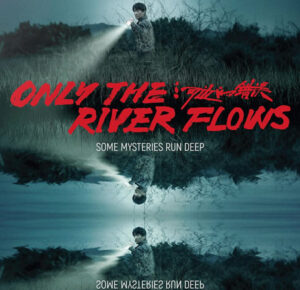



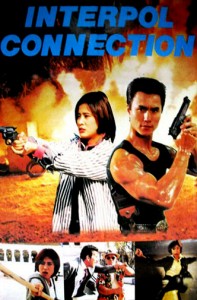
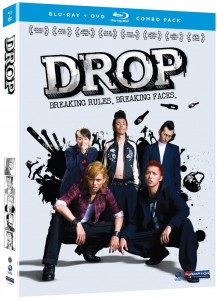
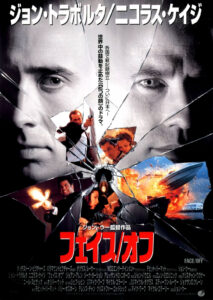
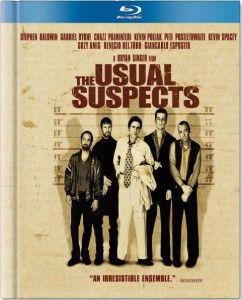
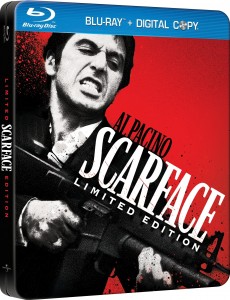

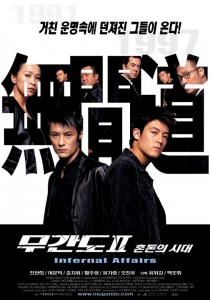
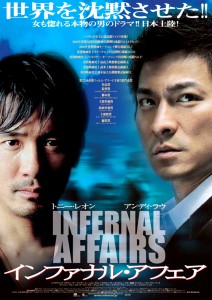
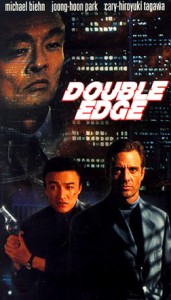

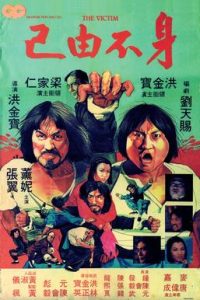
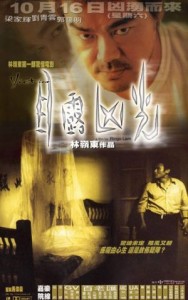
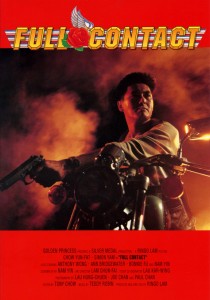



3 Comments